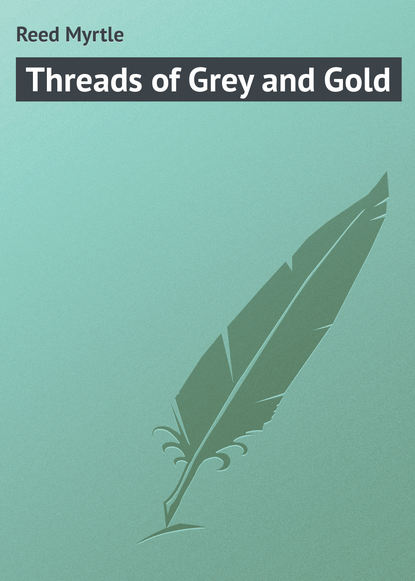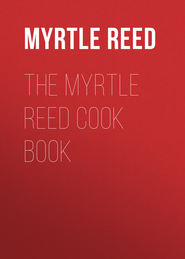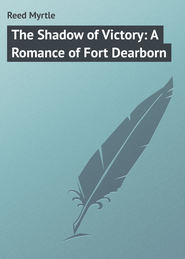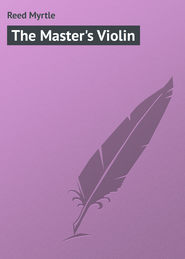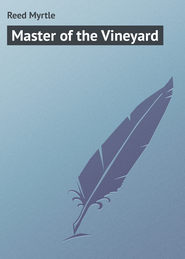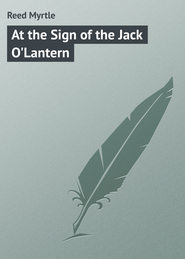По всем вопросам обращайтесь на: info@litportal.ru
(©) 2003-2024.
✖
Threads of Grey and Gold
Настройки чтения
Размер шрифта
Высота строк
Поля
The homeless mongrel, to whom a painless death would be a blessing, is left to get a precarious living as best he may from the garbage boxes, and spread pestilence from house to house, but the setter, the collie, and the St. Bernard are choked into insensibility with a wire noose, hurled into a stuffy cage, and with the thermometer at ninety in the shade, are dragged through the blistering city, as a sop to that Cerberus of the law which demands for its citizens safety from dogs, and pays no attention to the lawlessness of men.
The dog tax which is paid every year is sufficient to guarantee the interest of the owner in his dog. Howells has pitied “the dogless man,” and Thomas Nelson Page has said somewhere that “some of us know what it is to be loved by a dog.”
Countless writers have paid tribute to his fidelity and devotion, and to the constant forgiveness of blows and neglect which spring from the heart of the commonest cur.
The trained hunter, who is as truly a sportsman as the man who brings down the birds he finds, can be easily fretted into madness by the injudicious application of the muzzle.
The average dog is a gentleman and does not attack people for the pleasure of it, and it is lamentably true that people who live in cities often find it necessary to keep some sort of a dog as a guardian to life and property. In spite of his loyalty, which every one admits, the dog is an absolute slave. Men with less sense, and less morality, constitute a court from which he has no appeal.
Four or five years of devotion to his master’s interests, and four or five years of peaceful, friendly conduct, count for absolutely nothing beside the perjured statement of some man, or even woman, who, from spite against the owner, is willing to assert, “the dog is vicious.”
“He is very imprudent, a dog is,” said Jerome K. Jerome. “He never makes it his business to inquire whether you are in the right or wrong – never bothers as to whether you are going up or down life’s ladder – never asks whether you are rich or poor, silly or wise, saint or sinner. You are his pal. That is enough for him, and come luck or misfortune, good repute or bad, honour or shame, he is going to stick to you, to comfort you, guard you, and give his life for you, if need be – foolish, brainless, soulless dog!
“Ah! staunch old friend, with your deep, clear eyes, and bright quick glances that take in all one has to say, before one has time to speak it, do you know you are only an animal and have no mind?
“Do you know that dull-eyed, gin-sodden lout leaning against the post out there is immeasurably your intellectual superior? Do you know that every little-minded selfish scoundrel, who never had a thought that was not mean and base – whose every action is a fraud and whose every utterance is a lie; do you know that these are as much superior to you as the sun is to the rush-light, you honourable, brave-hearted, unselfish brute?
“They are men, you know, and men are the greatest, noblest, wisest, and best beings in the universe. Any man will tell you that.”
Are the men whom we elect to public office our masters or our servants? If the former, let us change our form of government; if the latter, let us hope that from somewhere a little light may penetrate their craniums and that they may be induced to give the dog a chance.
Twilight
The birds were hushed into silence,
The clouds had sunk from sight,
And the great trees bowed to the summer breeze
That kissed the flowers good-night.
The stars came out in the cool still air,
From the mansions of the blest,
And softly, over the dim blue hills,
Night came to the world with rest.
Women’s Clothes in Men’s Books
When asked why women wrote better novels than men, Mr. Richard Le Gallienne is said to have replied, more or less conclusively, “They don’t”; thus recalling Punch’s famous advice to those about to marry.
Happily there is no segregation in literature, and masculine and feminine hands alike may dabble in fiction, as long as the publishers are willing.
If we accept Zola’s dictum to the effect that art is nature seen through the medium of a temperament, the thing is possible to many, though the achievement may differ both in manner and degree. For women have temperament – too much of it – as the hysterical novelists daily testify.
The gentleman novelist, however, prances in boldly, where feminine feet well may fear to tread, and consequently has a wider scope for his writing. It is not for a woman to mingle in a barroom brawl and write of the thing as she sees it. The prize-ring, the interior of a cattle-ship, Broadway at four in the morning – these and countless other places are forbidden by her innate refinement as well as by the Ladies’ Own, and all the other aunties who have taken upon themselves the guardianship of the Home with a big H.
Fancy the outpouring of scorn upon the luckless offender’s head if one should write to the Manners and Morals Department of the Ladies’ Own as follows: “Would it be proper for a lady novelist, in search of local colour and new experiences, to accept the escort of a strange man at midnight if he was too drunk to recognise her afterward?” Yet a man in the same circumstances would not hesitate to put an intoxicated woman into a sea-going cab, and would plume himself for a year and a day upon his virtuous performance.
All things are considered proper for a man who is about to write a book. Like the disciple of Mary McLane who stole a horse in order to get the emotions of a police court, he may delve deeply not only into life, but into that under-stratum which is not spoken of, where respectable journals circulate.
Everything is fish that comes into his net. If conscientious, he may even undertake marriage in order to study the feminine personal equations at close range. Woman’s emotions, singly and collectively, are pilloried before his scientific gaze. He cowers before one problem, and one only – woman’s clothes!
Carlyle, after long and painful thought, arrives at the conclusion that “cut betokens intellect and talent; colour reveals temper and heart.”
This reminds one of the language of flowers, and the directions given for postage-stamp flirtation. If that massive mind had penetrated further into the mysteries of the subject, we might have been told that a turnover collar indicated that the woman was a High Church Episcopalian who had embroidered two altar cloths, and that suède gloves show a yielding but contradictory nature.
Clothes are, undoubtedly, indices of character and taste, as well as a sop to conventionality, but this only when one has the wherewithal to browse at will in the department store. Many a woman with ermine tastes has only a rabbit-fur pocket-book, and thus her clothes wrong her in the sight of gods and women, though men know nothing about it.
Once upon a time there was a notion to the effect that women dressed to please men, but that idea has long since been relegated to the limbo of forgotten things.
Not one man in a thousand can tell the difference between Brussels point at thirty dollars a yard, and imitation Valenciennes at ten or fifteen cents a yard which was one of the “famous Friday features in the busy bargain basement.”
But across the room, yea, even from across the street, the eagle eye of another woman can unerringly locate the Brussels point and the mock Valenciennes.
A man knows silk by the sound of it and diamonds by the shine. He will say that his heroine “was richly dressed in silk.” Little does he wot of the difference between taffeta at eighty-five cents a yard and broadcloth at four dollars. Still less does he know that a white cotton shirt-waist represents financial ease, and a silk waist of festive colouring represents poverty, since it takes but two days to “do up” a white shirt-waist in one sense, and thirty or forty cents to do it up in the other!
One listens with wicked delight to men’s discourse upon woman’s clothes. Now and then a man will express his preference for a tailored gown, as being eminently simple and satisfactory. Unless he is married and has seen the bills for tailored gowns, he also thinks they are inexpensive.
It is the benedict, wise with the acquired knowledge of the serpent, who begs his wife to get a new party gown and let the tailor-made go until next season. He also knows that when the material is bought, the expense has scarcely begun, whereas the ignorant bachelor thinks that the worst is happily over.
In A Little Journey through the World Mr. Warner philosophised thus: “How a woman in a crisis hesitates before her wardrobe, and at last chooses just what will express her innermost feelings!”
If all a woman’s feelings were to be expressed by her clothes, the benedicts would immediately encounter financial shipwreck. On account of the lamentable scarcity of money and closets, one is eternally adjusting the emotion to the gown.
Some gown, seen at the exact psychological moment, fixes forever in a man’s mind his ideal garment. Thus we read of blue calico, of pink-and-white print, and more often still, of white lawn. Mad colour combinations run riot in the masculine fancy, as in the case of a man who boldly described his favourite costume as “red, with black ruffles down the front!”
Of a hat, a man may be a surpassingly fine critic, since he recks not of style. Guileful is the woman who leads her liege to the millinery and lets him choose, taking no heed of the price and the attendant shock until later.
A normal man is anxious that his wife shall be well dressed because it shows the critical observer that his business is a great success. After futile explorations in the labyrinth, he concerns himself simply with the fit, preferring always that the clothes of his heart’s dearest shall cling to her as lovingly as a kid glove, regardless of the pouches and fulnesses prescribed by Dame Fashion.
In the writing of books, men are at their wits’ end when it comes to women’s clothes. They are hampered by no restrictions – no thought of style or period enters into their calculations, and unless they have a wholesome fear of the unknown theme, they produce results which further international gaiety.
Many an outrageous garment has been embalmed in a man’s book, simply because an attractive woman once wore something like it when she fed the novelist. Unbalanced by the joy of the situation, he did not accurately observe the garb of the ministering angel, and hence we read of “a clinging white gown” in the days of stiff silks and rampant crinoline; of “the curve of the upper arm” when it took five yards for a pair of sleeves, and of “short walking skirts” during the reign of bustles and trains!
In The Blazed Trail, Mr. White observes that his heroine was clad in brown which fitted her slender figure perfectly. As Hilda had yellow hair, “like corn silk,” this was all right, and if the brown was of the proper golden shade, she was doubtless stunning when Thorpe first saw her in the forest. But the gown could not have fitted her as the sheath encases the dagger, for before the straight-front corsets there were the big sleeves, and still further back were bustles and bouffant draperies. One does not get the impression that TheBlazed Trail was placed in the days of crinolines, but doubtless Hilda’s clothes did not fit as Mr. White seems to think they did.
That strenuous follower of millinery, Mr. Gibson, might give lessons to his friend, Mr. Davis, with advantage to the writer, if not to the artist. In Captain Macklin, the young man’s cousin makes her first appearance in a thin gown, and a white hat trimmed with roses, reminding the adventurous captain of a Dresden statuette, in spite of the fact that she wore heavy gauntlet gloves and carried a trowel. The lady had been doing a hard day’s work in the garden. No woman outside the asylum ever did gardening in such a costume, and Mr. Davis evidently has the hat and gown sadly mixed with some other pleasant impression.
The feminine reader immediately hides Mr. Davis’ mistake with the broad mantle of charity, and in her own mind clothes Beatrice properly in a short walking skirt, heavy shoes, shirt-waist, old hat tied down over the ears with a rumpled ribbon, and a pair of ancient masculine gloves, long since discarded by their rightful owner. Thus does lovely woman garden, except on the stage and in men’s books.
In The Story of Eva, Mr. Payne announces that Eva climbed out of a cab in “a fawn-coloured jacket,” conspicuous by reason of its newness, and a hat “with an owl’s head upon it!”
The jacket was possibly a coat of tan covert cloth with strapped seams, but it is the startling climax which claims attention. An owl! Surely not, Mr. Payne! It may have been a parrot, for once upon a time, before the Audubon Society met with widespread recognition, women wore such things, and at afternoon teas where many fair ones were gathered together the parrot garniture was not without significance. But an owl’s face, with its glaring glassy eyes, is too much like a pussy cat’s to be appropriate, and one could not wear it at the back without conveying an unpleasant impression of two-facedness, if the coined word be permissible.
Still the owl is no worse than the trimming suggested by a funny paper. The tears of mirth come yet at the picture of a hat of rough straw, shaped like a nest, on which sat a full-fledged Plymouth Rock hen, with her neck proudly, yet graciously curved. Perhaps Mr. Payne saw the picture and forthwith decided to do something in the same line, but there is a singular inappropriateness in placing the bird of Minerva upon the head of poor Eva, who made the old, old bargain in which she had everything to lose, and nothing save the bitterest experience to gain. A stuffed kitten, so young and innocent that its eyes were still blue and bleary, would have been more appropriate on Eva’s bonnet, and just as pretty.
In The Fortunes of Oliver Horn, Margaret Grant wears a particularly striking costume:
“The cloth skirt came to her ankles, which were covered with yarn stockings, and her feet were encased in shoes that gave him the shivers, the soles being as thick as his own and the leather as tough.
“Her blouse was of grey flannel, belted to the waist by a cotton saddle-girth, white and red, and as broad as her hand. The tam-o-shanter was coarse and rough, evidently home-made, and not at all like McFudd’s, which was as soft as the back of a kitten and without a seam.”
The dog tax which is paid every year is sufficient to guarantee the interest of the owner in his dog. Howells has pitied “the dogless man,” and Thomas Nelson Page has said somewhere that “some of us know what it is to be loved by a dog.”
Countless writers have paid tribute to his fidelity and devotion, and to the constant forgiveness of blows and neglect which spring from the heart of the commonest cur.
The trained hunter, who is as truly a sportsman as the man who brings down the birds he finds, can be easily fretted into madness by the injudicious application of the muzzle.
The average dog is a gentleman and does not attack people for the pleasure of it, and it is lamentably true that people who live in cities often find it necessary to keep some sort of a dog as a guardian to life and property. In spite of his loyalty, which every one admits, the dog is an absolute slave. Men with less sense, and less morality, constitute a court from which he has no appeal.
Four or five years of devotion to his master’s interests, and four or five years of peaceful, friendly conduct, count for absolutely nothing beside the perjured statement of some man, or even woman, who, from spite against the owner, is willing to assert, “the dog is vicious.”
“He is very imprudent, a dog is,” said Jerome K. Jerome. “He never makes it his business to inquire whether you are in the right or wrong – never bothers as to whether you are going up or down life’s ladder – never asks whether you are rich or poor, silly or wise, saint or sinner. You are his pal. That is enough for him, and come luck or misfortune, good repute or bad, honour or shame, he is going to stick to you, to comfort you, guard you, and give his life for you, if need be – foolish, brainless, soulless dog!
“Ah! staunch old friend, with your deep, clear eyes, and bright quick glances that take in all one has to say, before one has time to speak it, do you know you are only an animal and have no mind?
“Do you know that dull-eyed, gin-sodden lout leaning against the post out there is immeasurably your intellectual superior? Do you know that every little-minded selfish scoundrel, who never had a thought that was not mean and base – whose every action is a fraud and whose every utterance is a lie; do you know that these are as much superior to you as the sun is to the rush-light, you honourable, brave-hearted, unselfish brute?
“They are men, you know, and men are the greatest, noblest, wisest, and best beings in the universe. Any man will tell you that.”
Are the men whom we elect to public office our masters or our servants? If the former, let us change our form of government; if the latter, let us hope that from somewhere a little light may penetrate their craniums and that they may be induced to give the dog a chance.
Twilight
The birds were hushed into silence,
The clouds had sunk from sight,
And the great trees bowed to the summer breeze
That kissed the flowers good-night.
The stars came out in the cool still air,
From the mansions of the blest,
And softly, over the dim blue hills,
Night came to the world with rest.
Women’s Clothes in Men’s Books
When asked why women wrote better novels than men, Mr. Richard Le Gallienne is said to have replied, more or less conclusively, “They don’t”; thus recalling Punch’s famous advice to those about to marry.
Happily there is no segregation in literature, and masculine and feminine hands alike may dabble in fiction, as long as the publishers are willing.
If we accept Zola’s dictum to the effect that art is nature seen through the medium of a temperament, the thing is possible to many, though the achievement may differ both in manner and degree. For women have temperament – too much of it – as the hysterical novelists daily testify.
The gentleman novelist, however, prances in boldly, where feminine feet well may fear to tread, and consequently has a wider scope for his writing. It is not for a woman to mingle in a barroom brawl and write of the thing as she sees it. The prize-ring, the interior of a cattle-ship, Broadway at four in the morning – these and countless other places are forbidden by her innate refinement as well as by the Ladies’ Own, and all the other aunties who have taken upon themselves the guardianship of the Home with a big H.
Fancy the outpouring of scorn upon the luckless offender’s head if one should write to the Manners and Morals Department of the Ladies’ Own as follows: “Would it be proper for a lady novelist, in search of local colour and new experiences, to accept the escort of a strange man at midnight if he was too drunk to recognise her afterward?” Yet a man in the same circumstances would not hesitate to put an intoxicated woman into a sea-going cab, and would plume himself for a year and a day upon his virtuous performance.
All things are considered proper for a man who is about to write a book. Like the disciple of Mary McLane who stole a horse in order to get the emotions of a police court, he may delve deeply not only into life, but into that under-stratum which is not spoken of, where respectable journals circulate.
Everything is fish that comes into his net. If conscientious, he may even undertake marriage in order to study the feminine personal equations at close range. Woman’s emotions, singly and collectively, are pilloried before his scientific gaze. He cowers before one problem, and one only – woman’s clothes!
Carlyle, after long and painful thought, arrives at the conclusion that “cut betokens intellect and talent; colour reveals temper and heart.”
This reminds one of the language of flowers, and the directions given for postage-stamp flirtation. If that massive mind had penetrated further into the mysteries of the subject, we might have been told that a turnover collar indicated that the woman was a High Church Episcopalian who had embroidered two altar cloths, and that suède gloves show a yielding but contradictory nature.
Clothes are, undoubtedly, indices of character and taste, as well as a sop to conventionality, but this only when one has the wherewithal to browse at will in the department store. Many a woman with ermine tastes has only a rabbit-fur pocket-book, and thus her clothes wrong her in the sight of gods and women, though men know nothing about it.
Once upon a time there was a notion to the effect that women dressed to please men, but that idea has long since been relegated to the limbo of forgotten things.
Not one man in a thousand can tell the difference between Brussels point at thirty dollars a yard, and imitation Valenciennes at ten or fifteen cents a yard which was one of the “famous Friday features in the busy bargain basement.”
But across the room, yea, even from across the street, the eagle eye of another woman can unerringly locate the Brussels point and the mock Valenciennes.
A man knows silk by the sound of it and diamonds by the shine. He will say that his heroine “was richly dressed in silk.” Little does he wot of the difference between taffeta at eighty-five cents a yard and broadcloth at four dollars. Still less does he know that a white cotton shirt-waist represents financial ease, and a silk waist of festive colouring represents poverty, since it takes but two days to “do up” a white shirt-waist in one sense, and thirty or forty cents to do it up in the other!
One listens with wicked delight to men’s discourse upon woman’s clothes. Now and then a man will express his preference for a tailored gown, as being eminently simple and satisfactory. Unless he is married and has seen the bills for tailored gowns, he also thinks they are inexpensive.
It is the benedict, wise with the acquired knowledge of the serpent, who begs his wife to get a new party gown and let the tailor-made go until next season. He also knows that when the material is bought, the expense has scarcely begun, whereas the ignorant bachelor thinks that the worst is happily over.
In A Little Journey through the World Mr. Warner philosophised thus: “How a woman in a crisis hesitates before her wardrobe, and at last chooses just what will express her innermost feelings!”
If all a woman’s feelings were to be expressed by her clothes, the benedicts would immediately encounter financial shipwreck. On account of the lamentable scarcity of money and closets, one is eternally adjusting the emotion to the gown.
Some gown, seen at the exact psychological moment, fixes forever in a man’s mind his ideal garment. Thus we read of blue calico, of pink-and-white print, and more often still, of white lawn. Mad colour combinations run riot in the masculine fancy, as in the case of a man who boldly described his favourite costume as “red, with black ruffles down the front!”
Of a hat, a man may be a surpassingly fine critic, since he recks not of style. Guileful is the woman who leads her liege to the millinery and lets him choose, taking no heed of the price and the attendant shock until later.
A normal man is anxious that his wife shall be well dressed because it shows the critical observer that his business is a great success. After futile explorations in the labyrinth, he concerns himself simply with the fit, preferring always that the clothes of his heart’s dearest shall cling to her as lovingly as a kid glove, regardless of the pouches and fulnesses prescribed by Dame Fashion.
In the writing of books, men are at their wits’ end when it comes to women’s clothes. They are hampered by no restrictions – no thought of style or period enters into their calculations, and unless they have a wholesome fear of the unknown theme, they produce results which further international gaiety.
Many an outrageous garment has been embalmed in a man’s book, simply because an attractive woman once wore something like it when she fed the novelist. Unbalanced by the joy of the situation, he did not accurately observe the garb of the ministering angel, and hence we read of “a clinging white gown” in the days of stiff silks and rampant crinoline; of “the curve of the upper arm” when it took five yards for a pair of sleeves, and of “short walking skirts” during the reign of bustles and trains!
In The Blazed Trail, Mr. White observes that his heroine was clad in brown which fitted her slender figure perfectly. As Hilda had yellow hair, “like corn silk,” this was all right, and if the brown was of the proper golden shade, she was doubtless stunning when Thorpe first saw her in the forest. But the gown could not have fitted her as the sheath encases the dagger, for before the straight-front corsets there were the big sleeves, and still further back were bustles and bouffant draperies. One does not get the impression that TheBlazed Trail was placed in the days of crinolines, but doubtless Hilda’s clothes did not fit as Mr. White seems to think they did.
That strenuous follower of millinery, Mr. Gibson, might give lessons to his friend, Mr. Davis, with advantage to the writer, if not to the artist. In Captain Macklin, the young man’s cousin makes her first appearance in a thin gown, and a white hat trimmed with roses, reminding the adventurous captain of a Dresden statuette, in spite of the fact that she wore heavy gauntlet gloves and carried a trowel. The lady had been doing a hard day’s work in the garden. No woman outside the asylum ever did gardening in such a costume, and Mr. Davis evidently has the hat and gown sadly mixed with some other pleasant impression.
The feminine reader immediately hides Mr. Davis’ mistake with the broad mantle of charity, and in her own mind clothes Beatrice properly in a short walking skirt, heavy shoes, shirt-waist, old hat tied down over the ears with a rumpled ribbon, and a pair of ancient masculine gloves, long since discarded by their rightful owner. Thus does lovely woman garden, except on the stage and in men’s books.
In The Story of Eva, Mr. Payne announces that Eva climbed out of a cab in “a fawn-coloured jacket,” conspicuous by reason of its newness, and a hat “with an owl’s head upon it!”
The jacket was possibly a coat of tan covert cloth with strapped seams, but it is the startling climax which claims attention. An owl! Surely not, Mr. Payne! It may have been a parrot, for once upon a time, before the Audubon Society met with widespread recognition, women wore such things, and at afternoon teas where many fair ones were gathered together the parrot garniture was not without significance. But an owl’s face, with its glaring glassy eyes, is too much like a pussy cat’s to be appropriate, and one could not wear it at the back without conveying an unpleasant impression of two-facedness, if the coined word be permissible.
Still the owl is no worse than the trimming suggested by a funny paper. The tears of mirth come yet at the picture of a hat of rough straw, shaped like a nest, on which sat a full-fledged Plymouth Rock hen, with her neck proudly, yet graciously curved. Perhaps Mr. Payne saw the picture and forthwith decided to do something in the same line, but there is a singular inappropriateness in placing the bird of Minerva upon the head of poor Eva, who made the old, old bargain in which she had everything to lose, and nothing save the bitterest experience to gain. A stuffed kitten, so young and innocent that its eyes were still blue and bleary, would have been more appropriate on Eva’s bonnet, and just as pretty.
In The Fortunes of Oliver Horn, Margaret Grant wears a particularly striking costume:
“The cloth skirt came to her ankles, which were covered with yarn stockings, and her feet were encased in shoes that gave him the shivers, the soles being as thick as his own and the leather as tough.
“Her blouse was of grey flannel, belted to the waist by a cotton saddle-girth, white and red, and as broad as her hand. The tam-o-shanter was coarse and rough, evidently home-made, and not at all like McFudd’s, which was as soft as the back of a kitten and without a seam.”





